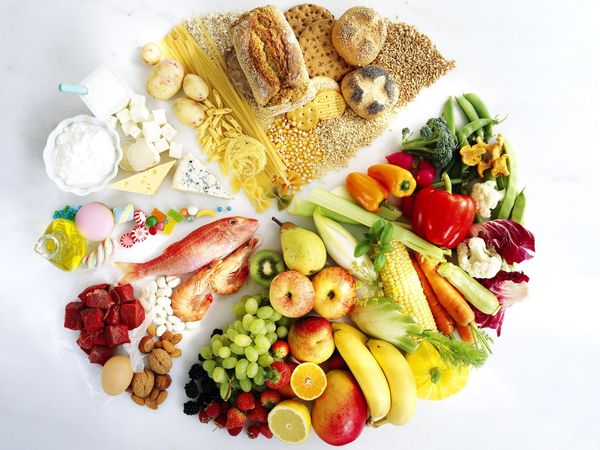A sustainable diet is one that is generally healthful and has a low impact on the environment and food supply.
Adopting a sustainable diet can help maintain an individual’s health while also making sure the planet has enough resources to feed future generations of humans.
This is a complex idea, but in the simplest terms, a sustainable diet looks to have a positive impact on the individual and environment, both now and in the future.
There are no set rules on what makes a diet sustainable. However, some diets and food items might be more sustainable than others, and choosing them can help a person reduce their environmental impact.
In this article, learn more about food and sustainability, as well as the health effects of sustainable diets.
What is the most sustainable diet?

The EAT-Lancet Commission, a group of scientists from 16 different countries, addressed the existing evidence surrounding the planet’s food demands, waste, and overall diet.
According to the Commission, food production is the world’s largest cause of environmental change. They note that vegan and vegetarian diets have the greatest reduction in land use and greenhouse gas emissions, and that vegetarian diets use the least water.
Their research notes that a universally healthful reference diet includes increasing consumption of:
- vegetables
- fruits
- whole grains
- nuts
- legumes
Meanwhile, a person eating sustainably will eat low amounts of or no:
- refined grains
- added sugars
- red meat
- processed foods
As well as changing the environment with land clearing and other farming practices, food production has a major impact on greenhouse gases.
According to the World Health Organization (WHO), food production accounts for 20–30% of global greenhouse gas emissions and up to 66% of water usage.
Although a varied diet is crucial to human health, a truly sustainable diet will also focus on the health of the environment.
A sustainable diet takes into account the impact it will have on the environment, the individual, and the food chain as a whole. Factors that determine how sustainable a certain diet includes:
- nutritional availability
- relative cost
- biodiversity
- ecosystem protection
- general health
Considering all these factors should help ensure that the planet can continue to provide enough food and resources for a growing population and future generations.
Some eating plans already adhere to these guidelines more than others, so following them may be a simple way to make the diet more sustainable. Diets that are more sustainable than the standard Western diet include:
Vegetarian and plant-based diets
The EAT-Lancet Commission note that vegetarian and plant-based, or vegan, diets are more sustainable than those that contain meat and other animal products. The Commission noted that switching animal products for plant-based ones had environment and health benefits.
They state that:
“Overall, studies concur that plant-based foods cause fewer adverse environmental effects per unit weight, per serving, per unit of energy, or per protein weight than does animal source foods across various environmental indicators.”
As a study in the journal Global Environmental Politics notes, animal products such as meat, dairy, and eggs are common topics of conversation when considering sustainable diets.
This is because these animal products have a few significant impacts to consider, including:
- land use
- water use
- greenhouse gas emissions
In 2014, the Food and Agriculture Organization of the United Nations noted that livestock, in general, make up 14.5% of all human-induced emissions. Reducing the impact of this livestock by reducing the need for it and improving farming practices can help lower this impact.
Some farms are now working on composting animal waste for fertilizer use and capturing methane gas to supply the energy needs of the farming operation.
Animal foods can still have a place in a sustainable diet, though there is no agreement on how much of anyone animal food a person can eat and still be sustainable.
In general, a diet higher in plant foods is more sustainable than a diet higher in animal products.
The issue is complex, with many contributing factors, including:
- land use
- overfishing
- methane production from farm animals
- water usage to grow crops to feed livestock
For example, farming an acre of corn for human consumption means that all that food can go directly to feeding a growing human population.
For people who eat animal products, the same acre of corn would go toward feeding livestock. However, the animals themselves also take up additional land and resources. So, farming animal foods requires significantly more land.
Learn more about the health benefits of plant-based diets in this article.
Local food diets
Local food diets focus on eating foods from the area in which a person lives.
Depending on where a person lives, however, these diets can take significant planning to implement. People in northern regions, where fewer fruits and vegetables grow, may need to take extra steps to ensure that they get enough nutrients.
The idea behind local food diets is that they reduce the “food miles” necessary for produce and other foods to reach supermarkets.
This type of diet emphasizes eating seasonally, and many people may also choose to buy from organic local farms.
That said, there have so far been few studies into the impact of eating locally on the environment, and some research even suggests that local eating has no environmental or health benefits compared with eating nonlocal food.
However, some possible benefits for the environment include:
- reducing the need for transporting food long distances
- reducing food packaging and waste, as the produce does not have to last as long
- reducing resources necessary to grow food that is out of season
Flexitarian diet
The flexitarian diet puts the focus on plant foods but is also “flexible,” meaning that people can include animal products sparingly.
The aim of this diet is to reduce the environmental impact an individual has by reducing their consumption of:
- red meat
- fish
- dairy
- packaged foods
A sustainable flexitarian diet could still include these products, just in smaller amounts, while keeping the focus on whole plant foods.
However, there is no consensus on how many animal products a person can eat in a given time while being sustainable.
A flexitarian diet is likely a good choice for a person’s overall health, too. Research into sustainable diets has found that people who follow vegetarian, vegan, pescatarian (which are diets that include fish but no other meat), and semi-vegetarian diets have an overall 12% lower mortality risk than people who eat meat.
Learn more about a pescatarian diet and the differences between vegan and vegetarian diets here.
Source: https://www.medicalnewstoday.com/articles/327314.php#what-is-the-most-sustainable-diet
More on Nutrition & Weight Loss






Leave A Comment
You must be logged in to post a comment.